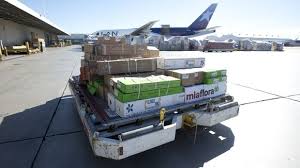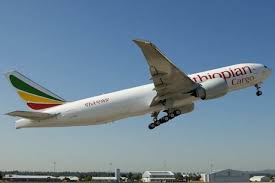FreightWaves is providing a forum – Market Voices – for a number of market experts.
Cathy Morrow Roberson is a market analyst with a research and economics background. Roberson began her career as a librarian; she was then an analyst at an e-commerce start-up; and was an analyst at UPS Supply Chain Solutions supporting market, competitive and mergers & acquisition research and analytic needs for 11 years. After a brief stint with specialized consulting firms, Roberson now manages the logistics-focused market research firm, Logistics Trends & Insights LLC, which is based in Atlanta, Georgia.
Perhaps it is its location that makes this airport a little different than others. Located in South Florida, over 80 airlines serve the airport with 14 of those being U.S. all-cargo carriers and 21 being foreign-all-cargo carriers.
Statistically, Miami International Airport (MIA) has started 2019 where it left off in 2018, with strong domestic cargo tons. For 2018, total cargo tons were up 2.8 percent, with international cargo tons up 1 percent and domestic cargo tons up 13.4 percent. For the first two months of this year, MIA’s total cargo tons are down approximately 1.5 percent. However, domestic cargo tons are up a healthy 10 percent for the same period.

As the fifth-largest U.S. airport in terms of cargo, Miami International Airport continues to welcome the logistics community. The airport is perhaps one of the most diversified in the U.S. It is a leading importer of flowers – 80 percent of all flowers imported to the U.S. comemove through its port district. It is also the first airport in the Americas to become a certified Center of Excellence for Independent Validators in Pharmaceutical Logistics (CEIV).

Considered the largest U.S. gateway to Latin America, and representing about 38 percent of Brazil’s air trade market alone, the airport is looking to diversify flights.

In August 2018, Ethiopian Airlines launched the first of two weekly freighter flights between the Ethiopian capital of Addis Ababa and Miami, creating the first-ever cargo-only route between the African continent and MIA. The scheduled flights operate on a route that includes stops in Spain, Belgium and Colombia on inbound and outbound services.
This year, additional international carriers will operate at the airport including LOT Polish Airlines, which will begin four weekly flights to Warsaw on June 1 and is Miami’s first service to Poland and the only nonstop route between Florida and Eastern Europe. French airline Corsair will launch service to Paris Orly Airport on June 10 with four weekly flights and American Airlines began serving Cordoba, Argentina on April 2.
Besides airlines extending flights to Miami, the airport continues to attract logistics providers seeking to capitalize on its strength in Latin American trade. For example, German logistics provider Rhenus Logistics recently acquired Freight Logistics. Headquartered in Miami, Freight Logistics operates a consolidation hub located near the airport and specializes in air and ocean transportation, customs brokerage, compliance and warehousing and distribution. Freight Logistics is accredited by the International Air Transport Association and a licensed Non-Vessel Owning Common Carrier with locations in Argentina, Brazil and Chile.
Earlier this year, Hong Kong-based logistics company Tigers opened a new facility that doubled its storage capacity in Miami to about 31,000 square feet. The facility is bonded and serves as a container freight station and as an in-bond export consolidation warehouse. According to the company, the investment will allow Tigers to grow its focus on the Latin American region as well as to service the e-commerce market.
Indeed, MIA is looking to capitalize even further on global e-commerce volumes. Forming a partnership with Brazil’s post office, Correios, the aim of the relationship is to expedite the shipment of packages. The partnership, named Compra Fora, which translates to “Buy Outside,” will allow for e-commerce packages of all sizes from around the world to be shipped to MIA, be pre-cleared by Correios and shipped to Brazil as domestic cargo in under a week.
As Miami International Airport works to grow its global cargo volumes, the airport will remain closely tied to the Latin American market. This is perhaps what makes the airport special. An economically volatile region, Latin America offers many opportunities to the U.S. market but the risks remain high. MIA has capitalized on its Latin American ties but it knows it needs to diversify into other geographies to grow its cargo volumes. This year looks to be a positive one for the airport as it welcomes new airlines from Europe and Africa.










